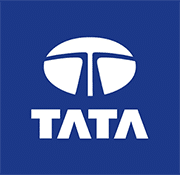In this much awaited article, we uncover the Business Model of the most famous Indian conglomerate, the Tata Group, using the Business Model Canvas and explain the Tata Business Model comprehensively.
One company that has consistently stood out for its versatile business model and enduring success is the Tata Group, an Indian multinational conglomerate with operations in over 100 countries. In this blog post, we will take a deep dive into the business model of Tata using Alexander Osterwalder’s Business Model Canvas (BMC). We will also introduce the company, its founders, and explore the story of how and why it was started.
The Tata Group: A Brief Introduction
The Tata Group was founded by Jamsetji Tata in 1868, and it has since grown into one of India’s largest and most respected conglomerates. With over 150 years of experience and a presence in various industries, including automotive, IT services, consumer goods, steel, and energy, Tata has become a household name in India and beyond.
Jamsetji Tata, the visionary founder of the group, was a pioneering industrialist in India. Born into a family of Parsi priests in 1839, Jamsetji started his career as a merchant before venturing into the textile business. His ambitious vision for India’s industrial growth and development laid the foundation for the Tata Group.
The Story of Tata: How and Why it Started
Jamsetji Tata’s entrepreneurial journey began with the establishment of a trading company in 1868. He started with a textile mill in Nagpur, known as the Central India Spinning, Weaving and Manufacturing Company Limited, later renamed as Empress Mill. This marked the beginning of the Tata Group.
Jamsetji was driven by a vision to create an industrial empire that would contribute to India’s growth and self-reliance. He believed that India needed to catch up with the Western world by embracing modern technology and industrialization. With this in mind, he ventured into various industries, including steel, power, and hospitality, paving the way for the Tata Group’s future diversification.
Over the years, Tata has grown into a massive conglomerate through a combination of organic growth, strategic acquisitions, and partnerships. The company has always focused on innovation, ethics, and social responsibility – values that were embedded by Jamsetji Tata.
The Business Model Canvas of Tata Group: A Framework for Analysis
To better understand the Tata Group’s business model, we will employ Alexander Osterwalder’s Business Model Canvas (BMC), a widely used tool for visualizing and analyzing business models. The BMC consists of nine building blocks, which we will use to dissect Tata’s business model:
- Customer Segments
- Value Proposition
- Channels
- Customer Relationships
- Revenue Streams
- Key Resources
- Key Activities
- Key Partnerships
- Cost Structure
Customer Segments
Tata Group serves a wide range of customer segments, given its diverse portfolio of companies and industries. Some prominent segments include:
- Individual consumers: Tata caters to individual consumers through its automotive (Tata Motors), consumer goods (Tata Consumer Products), and retail (Trent Ltd) businesses.
- Businesses and organizations: Tata’s IT services (Tata Consultancy Services), steel (Tata Steel), and power (Tata Power) divisions serve various businesses and organizations across different sectors.
- Governments: Tata Group companies also work with governments and public sector organizations, particularly in the areas of infrastructure, power, and defense.
Value Proposition
The Tata Group’s value proposition is built on several pillars:
- Quality and innovation: Tata is known for delivering high-quality products and services across its various businesses, driven by a focus on innovation and technology. For example, Tata Motors has introduced innovative vehicles like the Tata Nano, the world’s most affordable car, and the Tata Nexon, a highly-rated electric vehicle.
- Brand reputation and trust: Over the years, Tata has earned a strong reputation for integrity, ethical business practices, and corporate social responsibility. This has instilled trust among customers and stakeholders alike.
- Diversification and synergy: Tata’s diverse business portfolio allows it to leverage synergies across various industries, providing a competitive advantage. For instance, the Tata Group’s presence in the automotive and steel sectors enables it to optimize resources and share expertise in manufacturing and technology.
- Social impact: The Tata Group has a long-standing commitment to community development and environmental sustainability, which adds to its appeal as a responsible corporate citizen.
Channels
Tata uses a variety of channels to reach its customers, depending on the nature of the business and the target market. These channels include:
- Direct sales: Many Tata Group companies, such as Tata Motors and Tata Steel, engage in direct sales through dedicated sales teams and business-to-business (B2B) relationships.
- Retail outlets: Tata operates numerous retail outlets across its various businesses, including Westside and Star Bazaar in the retail sector, and Tata Motors’ dealerships for automotive sales.
- Online and digital channels: Tata Group companies also leverage online platforms and digital channels to reach customers. For example, Tata Consultancy Services (TCS) utilizes its digital presence to engage clients, while Tata Cliq, the group’s e-commerce platform, serves online shoppers.
- Partnerships and collaborations: Tata frequently collaborates with other companies and organizations to expand its reach, such as its partnership with Starbucks to operate Starbucks stores in India.
Customer Relationships
Tata Group fosters strong customer relationships through various means, including:
- Personal assistance: Tata provides personal assistance and support to its customers across different businesses, with dedicated customer service teams and after-sales support.
- Loyalty programs: Tata has introduced several loyalty programs to reward and retain customers, such as the Tata Inner Circle program, which offers benefits and discounts for shopping at Tata-owned retail outlets.
- Community engagement: Tata is committed to engaging with its customers and stakeholders through various community initiatives, events, and corporate social responsibility programs.
Revenue Streams
Tata Group’s revenue streams are diverse, given its presence in multiple industries. Some key revenue streams include:
- Product sales: Tata generates revenue from the sale of products across its automotive, consumer goods, and retail businesses.
- Service fees: TCS, the group’s IT services arm, earns revenue through service fees from clients in industries such as banking, telecommunications, and manufacturing.
- Licensing and royalties: Tata earns revenue from licensing and royalties, particularly in its technology and innovation-focused businesses.
- Partnerships and collaborations: Joint ventures, partnerships, and collaborations with other companies also contribute to Tata’s revenue streams.
Key Resources
Tata Group’s key resources include:
- Physical assets: Tata’s extensive physical assets, such as manufacturing plants, retail outlets, and office spaces, are crucial for its operations.
- Human capital: Tata’s skilled workforce, including engineers, researchers, and management professionals, is central to its success.
- Intellectual property: Tata’s strong intellectual property portfolio, including patents, trademarks, and copyrights, helps protect and leverage its innovations.
- Brand value: Tata’s strong brand reputation and trust among customers and stakeholders are invaluable resources that have taken decades to build.
Key Activities
Tata Group’s key activities can be broadly categorized into:
- Operations and manufacturing: Tata’s manufacturing capabilities, particularly in the automotive and steel sectors, are critical to its success.
- Research and development (R&D): Tata invests heavily in R&D to drive innovation and maintain a competitive edge in various industries. For instance, TCS has Innovation Labs, which focus on emerging technologies and their applications in different sectors.
- Marketing and sales: Tata’s marketing and sales efforts are essential for promoting its products and services and generating revenue across its businesses.
- Supply chain and logistics management: Tata Group relies on efficient supply chain and logistics management to optimize its operations, reduce costs, and ensure timely delivery of products and services.
- Corporate social responsibility (CSR) and sustainability initiatives: Tata’s commitment to CSR and sustainability is a crucial aspect of its overall business strategy, with a focus on community development, education, healthcare, and environmental conservation.
Key Partnerships
Tata Group has forged various strategic partnerships and collaborations to enhance its capabilities and market reach. Some notable examples include:
- Starbucks: Tata Global Beverages and Starbucks have a joint venture, Tata Starbucks Ltd, to operate Starbucks stores in India, using locally sourced coffee beans and leveraging Tata’s retail expertise.
- AirAsia: Tata entered the aviation industry by partnering with Malaysia’s AirAsia Group to form AirAsia India, a low-cost airline operating in the Indian market.
- Jaguar Land Rover: In 2008, Tata Motors acquired the iconic British luxury automotive brands Jaguar and Land Rover, which has since been transformed into a profitable and innovative business unit.
Cost Structure
Tata Group’s cost structure varies across its diverse businesses, with some key cost drivers including:
- Raw materials and manufacturing: The cost of raw materials, such as steel and aluminum, and manufacturing operations are significant cost drivers for Tata’s automotive and steel businesses.
- Employee salaries and benefits: With a large workforce, employee salaries and benefits constitute a considerable portion of Tata’s expenses.
- Research and development: Tata’s investment in R&D contributes to its cost structure, particularly in technology-intensive businesses like TCS and Tata Motors.
- Marketing and advertising: Tata incurs marketing and advertising expenses to promote its products and services across various channels.
- Logistics and supply chain: Tata’s logistics and supply chain costs are critical components of its cost structure, particularly in its manufacturing and retail businesses.
The Tata Group’s success can be attributed to a versatile and robust business model that has evolved over the years. By using Alexander Osterwalder’s Business Model Canvas, we can better understand how Tata has effectively balanced its diverse business portfolio, leveraged synergies, and maintained a strong focus on innovation, quality, and customer satisfaction.
Tata’s commitment to ethical business practices, corporate social responsibility, and sustainability has further cemented its reputation as a trusted and respected global brand. As the Tata Group continues to expand and innovate, it remains a fascinating case study for entrepreneurs, business leaders, and academics alike.
Did you know? Corporate teams like to use our coworking space in Bangalore.
Learn more about our coworking space on YouTube where we talk about a variety of topics including personal finance, entrepreneurship, business and life.
Did you know? We also have a private theatre in Bangalore.




